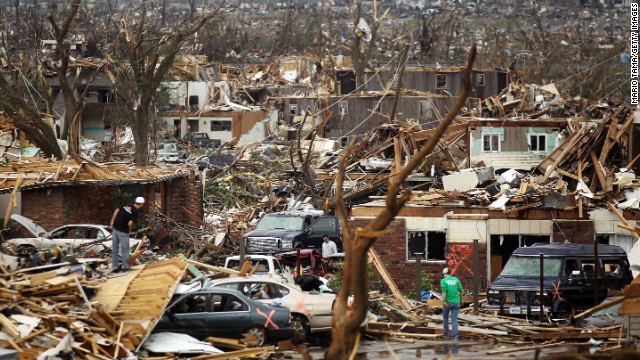

"We had seen it in other radars in other parts of the country, but it was the first time in southwest Missouri." "That was the first time in my career up to that point that I had seen that (height)," he said. Late that afternoon, the NWS saw indication on the radar that debris had been thrown way up into the atmosphere - well above 10,000 feet, Runnels said. "Tornadoes were a possibility, but not one we were necessary keying in on." "We were predominantly looking at storms likely to produce very large hail," Runnels said. It started as a typical spring Ozarks day in which severe weather was looming, recalls Steve Runnels, warning coordination meteorologist with the National Weather Service office in Springfield. The Joplin tornado is among the deadliest on record and the seventh deadliest tornado in U.S. Some 4,000 homes were damaged, and 9,200 people were displaced. The massive EF-5 tornado killed 162 people and injured more than 1,000. Saturday marks 10 years since the devastating May 22, 2011, Joplin tornado. "There are health hazards associated with burning debris of any sort.View Gallery: Photos: 2011 Joplin tornado damage "I know there's a huge amount of debris, but finding a landfill in a valley someplace where you can put it and cover it over is a lot wiser than burning it," Carpenter said. If plastics, asbestos material or treated wood find their way into brush fires, they could produce emissions particularly dangerous for people with asthma or respiratory diseases, he said. Research has shown that tornadoes can suck up debris and deposit it up to 200 miles away, he said.ĭavid Carpenter, director of the Institute for Health and the Environment at the University at Albany-SUNY however has warned against the reckless disposal of debris. People in the Joplin area aren't the only ones who should be on the lookout for contaminated materials, said John Snow, a University of Oklahoma meteorology expert. "The last thing you want to do when a community's dealing with a situation like this is require a lot of permits and paperwork," said Kathleen Logan Smith, executive director of the Missouri Coalition for the Environment.


Environmentalists have agreed with the relaxation. In Joplin, environmental rules have been released, allowing the handling of substances like asbestos and lead paint to help with the clearing effort. Left with no homes or jobs, half of Greenberg's population left the beleaguered town.īack in Alabama, officials are asking residents to monitor environmental impact and report any issues. Yet the most significant environmental impact has been the dramatic drop in population. The rebuilding efforts offered the opportunity to create a greener and more sustainable town, featuring wind turbines and more ecologically sounds buildings. In 2007, the town of Greenberg was hit by a devastating tornado. This is before considerations of soil erosion, water pollution and flooding risk contamination. In the aftermath of Joplin's tornado an Anhydrous Ammonia leak at the Jasper Products Trucking Company had to be sealed. Many companies that housed chemical plants and the like have sent representatives to affected areas to help in the cleanup. The downing of electrical transformers runs the risk of leaking carcinogenic oil and the highly toxic polychlorinated biphenyls or PCBs. Many of those in Hackleberg and also Joplin, were built before regulations controlling the use of lead paint and asbestos were brought in, causing fears of contamination of the waterways, as well as soil. The path of destruction left by the tornado saw buildings and man-made structures ripped apart. The town is already further along than Joplin in measuring what effect the tornado has had on the environment and ecosystem. It did not garner as many international headlines yet 75% of the town has been destroyed and the death toll stands at 18. In late April, the town of Hackleberg was hit by an F5 tornado. But as the population of Joplin and the emergency services measure the more immediate impact, the environmental consequences of the tornado are already being taken into account. Homes, schools, hospitals, offices have been flattened. Winds of over 200 mph destroyed 8,000 structures. In Joplin, Missouri, the worst tornado in over a generation in the US has killed at least 139. 2011's tornado season in America has already had a devastating impact.


 0 kommentar(er)
0 kommentar(er)
